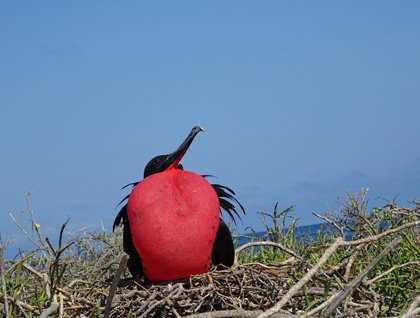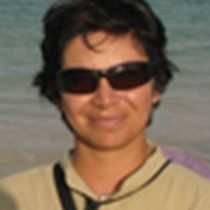After a quiet night, we started our new day on North Seymour Island. Our journey began with the option of a long walk on a rocky trail, which is where we often observe Galapagos land iguanas, as well as great frigatebirds in their nesting grounds.
We were not disappointed, and several male frigates were seen during our outing, with their bright red gular pouches fully inflated. As soon as they spotted a female, the males made a lot of noise and flapped their wings very quickly, hoping to get her attention. As we hiked back to the coast, we encountered Galapagos sea lions relaxing on the shore, as well as courting blue-footed boobies, doing their typical mating dance which includes marching, sky pointing, and long mating calls. After a while, we saw a female being called by three different males, and when we left, she had still not chosen her mate. At the end of the walk, we saw a female sea lion nursing her pup right at the dock, and we had to walk quietly around them so we could get on to our Zodiacs.
We returned to the National Geographic Endeavour and headed towards Rábida Island. This afternoon we went snorkeling from the shore as well as from Zodiacs in deep water, and for our guests who wanted to see the underwater wildlife without getting wet, we offered a ride on the glass-bottom boat. There was so much to see underwater today, including white-tipped reef sharks, Galápagos grunts, parrot fish, yellow-tailed mullets, and several other species of fish. For the second half of the afternoon, we disembarked onto a red sandy beach and had a relaxing stroll along the coast of Rábida. We walked to a small lagoon not far from the beach, where we saw a couple of greater flamingoes, Bahamas pintail ducks, and a rare sighting of the Vermillion flycatcher, whose red plumage shown through the dense black mangroves.
The day ended with a fantastic colorful sunset behind Isabela Island, as we loaded our Zodiacs and made our way back to the National Geographic Endeavour.



.jpg?width=106&height=85&mode=crop&scale=both&quality=50)



